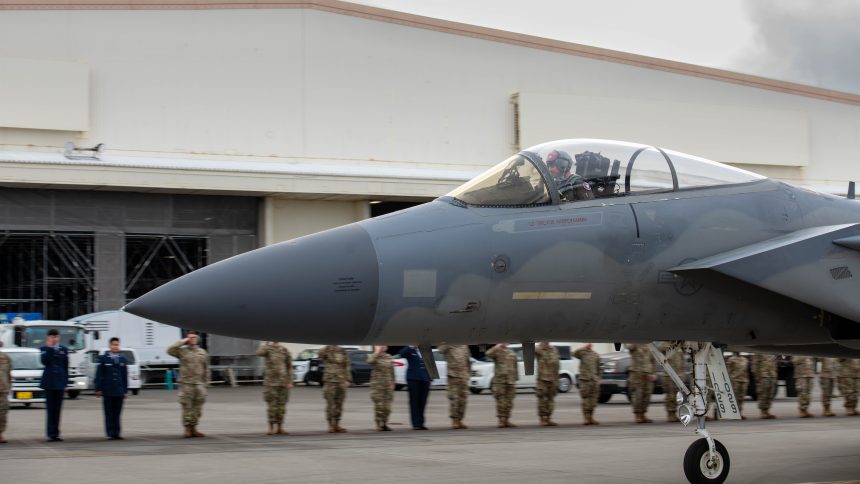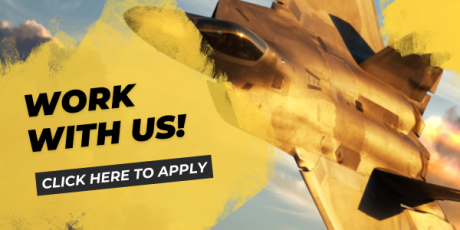After 45 years of operations, the 18th Wing conducted its last F-15C Eagle sortie, which also represents the type’s last U.S. Air Force active-duty flight.
Kadena’s final F-15C/D Eagle flight
The U.S. Air Force’s (USAF) 18th Wing conducted the final operational flight of the F-15C Eagle on Jan. 24, 2025, after 45 years of flight operations at Kadena Air Base, Japan. This flight, not to be confused with the ceremonial final flight of the Wing’s Eagles, which took place on Aug.15, 2024, also marked the USAF’s last active-duty legacy Eagle flight.
F-15Cイーグル戦闘機が最後の現役飛行を終え、嘉手納基地から撤退しました。 pic.twitter.com/xVvfwcK9Br
— 在沖米空軍嘉手納基地 (@KadenaAirBase_J) March 27, 2025
The flight also happened during a huge shift in organizational structure at the Wing: the 67th FGS (Fighter Generation Squadron) was in fact activated to support the eventual arrival of the next fighters, the F-15EX, while the 18th AMXS (Aircraft Maintenance Squadron) was deactivated. The commander of the 18th AMXS, Maj. Eric Boehm, assumed command of the 67th FGS.
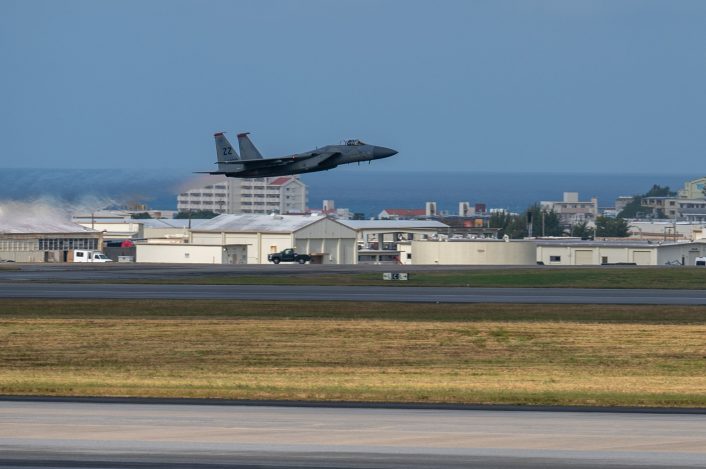
“Kadena-based F-15C/D Eagles have ensured air superiority for decades to uphold a free and open Indo-Pacific,” said USAF Gen. Ken Wilsbach, the current commander of ACC (Air Combat Command), who was also the commander of Kadena from 2009 through 2011. “We owe the many men and women, past and present, who have flown, maintained and supported the F-15 for their invaluable contributions toward peace and safety in the region.”
The jets that took part in the last flight received a ceremonial salute following the flight, and will be converted into a maintenance training aircraft. “We are using them to continue to train our weapons loaders and our maintainers, because there’s a lot of commonality between the F-15EX and the F-15C,” said the 18th Wing’s commander, Brig. Gen Nicholas Evans.
Replacing the Legacy Eagles
Although its last flight only happened on Jan. 24, the 18th Wing has already divested most of its F-15C/Ds steadily, starting in Nov. 2022. Since the F-15EXs, which are slated to replace the older Eagles at Kadena, have not yet been produced in large enough numbers to replace the older airframes immediately, an intermediate solution is currently used to ensure a constant fighter presence at the massive PACAF (PACific Air Forces) base.
In fact, to ensure no gaps in forward-deployed fighter capabilities, a steady-state presence will be maintained at Kadena by deploying fourth- and fifth-generation fighter units from across the USAF and ANG (Air National Guard) until the arrival of the F-15EXs. As such, Kadena is now one of the most diverse bases in the USAF where many different fighter types, like the F-15, F-16, F-22, and F-35, all fly out of it to support the F-15C/D retirement.
The deployments, which see around 12 to 14 aircraft from each squadron, will continue throughout the transition from the legacy platform to the more advanced F-15EX, but as the EXs start to arrive, the rotational squadrons will decrease in timing and tempo, said Evans.
The units currently deployed to Kadena include F-35As from the 158th Fighter Wing, Vermont ANG, and the 354th Fighter Wing, based in Alaska; F-16CMs from the 20th Fighter Wing, South Carolina; and F-22As from the 354th Fighter Wing. Previously, other units have deployed, including the 159th Fighter Wing, who also operates the F-15C.
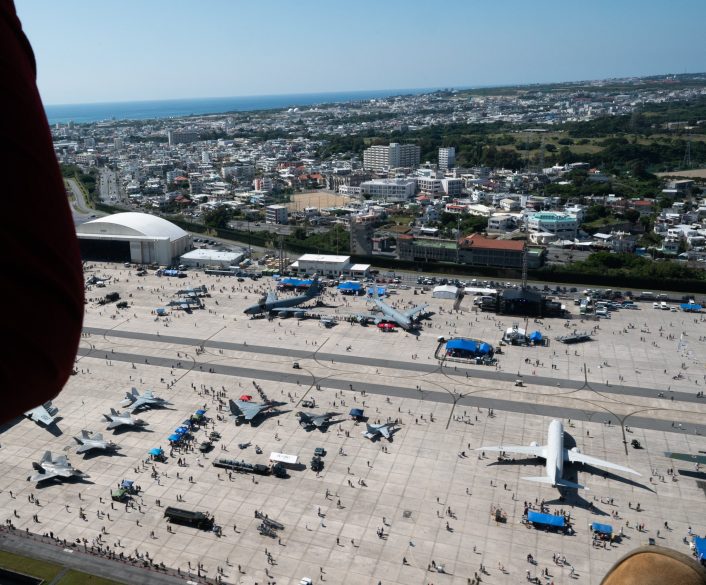
The PACAF fighters in Japan are currently undergoing a massive change in equipment: besides the legacy F-15s being retired and replaced, the 35th Fighter Wing at Misawa Air Base is also set to start divesting its F-16CM/DM fighters for F-35As. This transition will also make Misawa’s jets all F-35s: the JASDF (Japan Air Self Defense Force) also operates two squadrons of F-35As from the joint base.
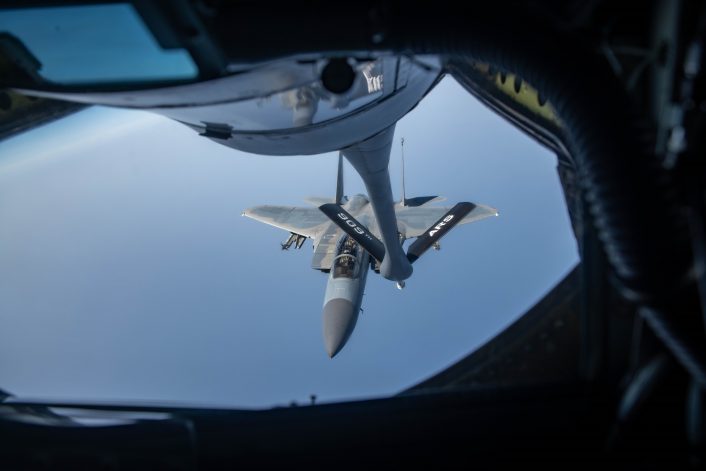
The F-15EX Eagle II
The Air Force announced on Jul. 4, 2024, that the replacement for the 48 F-15C/Ds stationed at Kadena will be the F-15EX, but no definitive time for the first of them to arrive at the base was given at the time.
According to Evans, the first of the new multirole fighters are now expected to arrive between Mar. and Jun. 2026. He added that a specific arrival date will be determined between the USAF and Boeing as the production for the jet ramps up. “As soon as the first EX arrives here, we’ll bring out the mayors and the city councils and let them see the aircraft firsthand,” Evans also told reporters.
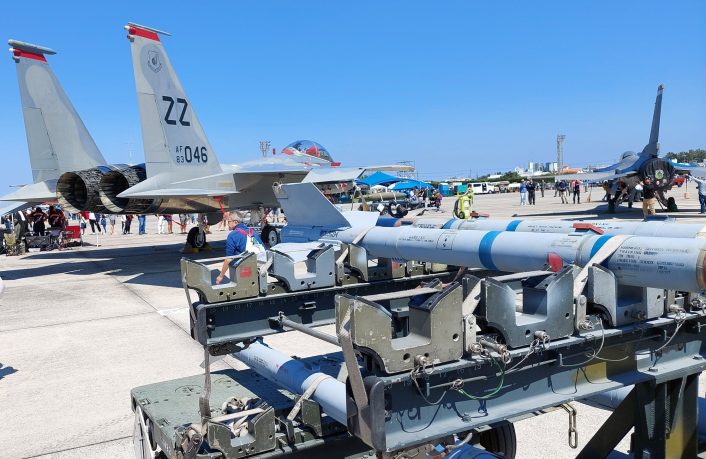
As mentioned, due to the massive commonality between the F-15C and the F-15EX, maintenance training using the legacy platforms is very much possible. However, for maximum efficiency, some crews with the 67th FGS have been sent to Portland ANG base to train with the base’s new F-15EXs.
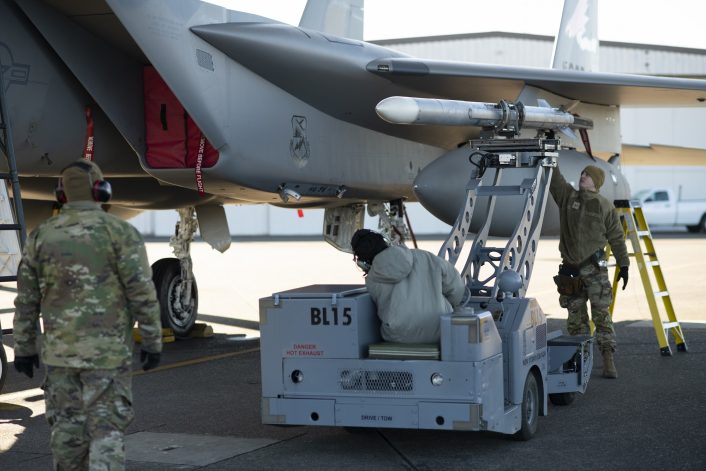
Although the F-15EX does not use stealth and thus are not considered fifth-generation aircraft, they feature next-generation avionics and networking capabilities, as well as a significantly larger payload and range than the legacy platform. The USAF initially planned to buy up to 144 of the aircraft, however its fiscal year 2025 budget proposal suggested a reduction to 98. It is still unclear how many units the service will end up buying.

